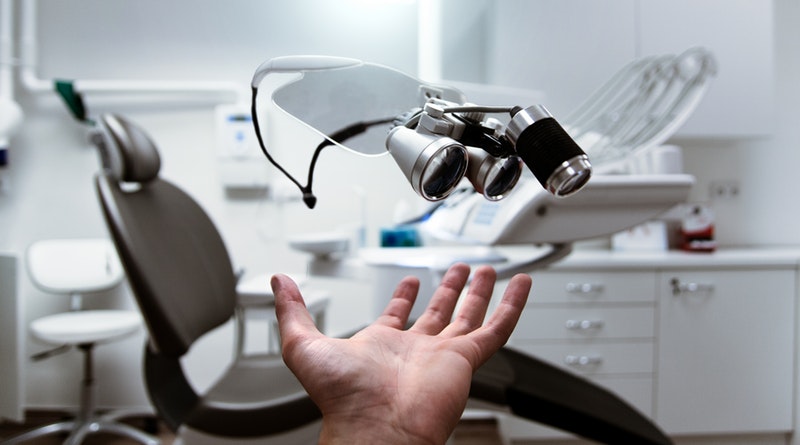10 Signs You Should Visit an Eye Doctor Today
Your vision is one of your most precious assets. It’s essential to take care of it and visit an eye doctor regularly to make sure everything is healthy. This blog post will discuss ten signs that you should visit an eye doctor today. Protecting your vision is crucial, and these are some common symptoms that could indicate a problem. If you experience any of these signs, please don’t hesitate to make an appointment with an optician near me.
1) Blurry vision:
This is one of the most common signs that something could be wrong with your eyes. If you have trouble seeing clearly, it’s time for an eye exam.
Blurred vision can signify many different eye problems, including nearsightedness, farsightedness, and astigmatism. It can also be a symptom of more severe conditions like macular degeneration or glaucoma. If you notice that your vision has become blurry, don’t wait to get it checked out.
-If you experience sudden onset blurred vision, especially in one eye, it could be a sign of a detached retina, and you should seek medical attention immediately.
2) Eye pain:
If you are experiencing eye pain, it could be a sign of different problems, such as eyestrain, allergies, or a more severe condition.
Eye pain can be caused by pink eye, cataracts, and glaucoma. It can also be a symptom of an infection or injury. If you have any kind of eye pain, please see an optometrist as soon as possible.
-If the pain is accompanied by redness, swelling, discharge from the eyes, fever, or headache, it may be indicative of a more severe problem, and you should seek medical attention immediately.
3) Sensitivity to light:
If you are suddenly experiencing sensitivity to light, it could signify an underlying eye condition.
Sensitivity to light is often a symptom of pink eye, dry eye, and cataracts. It can also signify more serious problems like uveitis or glaucoma. If you notice that you have trouble tolerating bright lights, make an appointment with an optometrist.
-If the sensitivity to light is accompanied by pain, redness, or discharge from the eyes, please seek medical attention immediately as this could indicate a more severe problem.
4) Floaters:
If you notice floaters in your vision, it’s crucial to have an eye exam as soon as possible.
Floaters are often harmless and have nothing to worry about. However, they can sometimes signify a more serious condition like retinal detachment of vitreous hemorrhage. If you notice floaters in your vision, make an appointment with an optometrist so that they can take a look.
-If flashes of light or blindness accompany the floaters, please seek medical attention immediately as this could indicate a detached retina.
5) Seeing halos around lights:
If you start to see halos around lights, it could signify an underlying eye condition.
Seeing halos around lights is often a symptom of conditions like glaucoma or cataracts. It can also be a sign of more severe problems like uveitis. If you notice that you see halos around lights, make an appointment with an optometrist so that they can take a look.
6) Difficulty reading:
If you find it difficult to read, it could be a sign of an underlying eye condition.
Difficulty reading is often a symptom of conditions like nearsightedness and dyslexia. It can also be a sign of more serious problems like macular degeneration. If you have trouble reading, make an appointment with your optometrist for a comprehensive exam.
7) Headaches:
If you are experiencing headaches, it could signify an underlying eye condition.
Headaches are often a symptom of conditions like eyestrain and allergies. They can also be a sign of more serious problems like glaucoma. If you are having frequent headaches, make an appointment with your optometrist so that they can take a look.
-If the headaches are accompanied by nausea, vomiting, dizziness, or blurred vision, please seek medical attention immediately as this could indicate a more serious problem.
8) Difficulty seeing at night:
If you find it difficult to see at night, it could be a sign of an underlying eye condition.
Difficulty seeing at night is often a symptom of conditions like nearsightedness and cataracts. It can also be a sign of more serious problems like glaucoma. If you have trouble seeing at night, make an appointment with your optometrist for a comprehensive exam.
-If the difficulty seeing at night is accompanied by headaches or nausea, please seek medical attention immediately as this could indicate a more serious problem.
9) Watery or dry eyes:
If you are experiencing watery or dry eyes, it could be a sign of an underlying eye condition.
Watery or dry eyes are often a symptom of pink eye and allergies. They can also be a sign of more severe problems like keratoconjunctivitis sicca. If you are having trouble with your eyes, make an appointment with your optometrist so that they can take a look.
10) Squinting:
If you find yourself squinting more than usual, it could be a sign of an underlying eye condition.
Squinting is often a symptom of conditions like nearsightedness and astigmatism. It can also be a sign of more serious problems like cataracts. If you are squinting more than usual, make an appointment with your optometrist for a comprehensive exam.
-If the squinting is accompanied by headaches or dizziness, please seek medical attention immediately as this could indicate a more serious problem.
These are just some of the most common signs that it’s time to visit an eye doctor. If you experience any of these symptoms, don’t hesitate to make an appointment. Protecting your vision is essential, and an eye contact doctor can help you keep your eyes healthy or visit nicelocal.com for more information.




